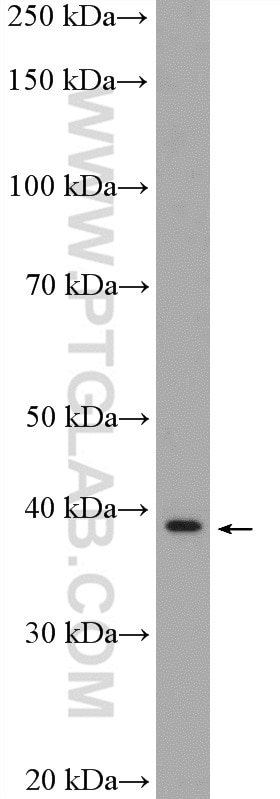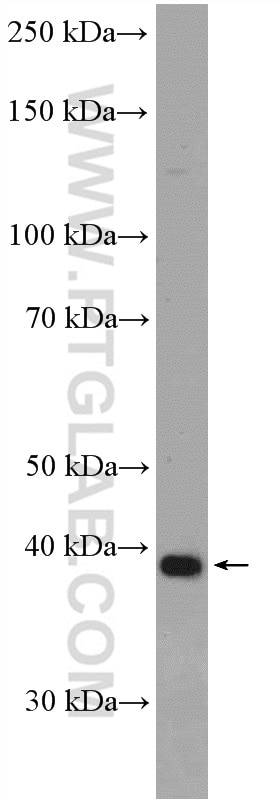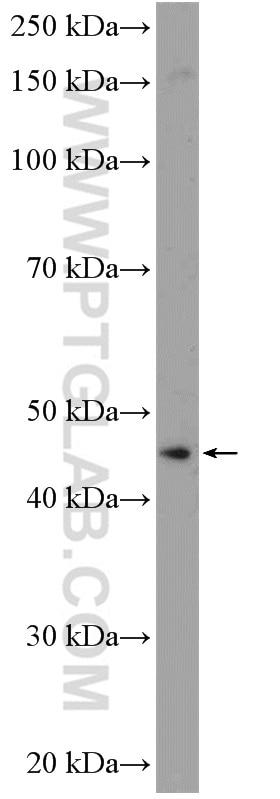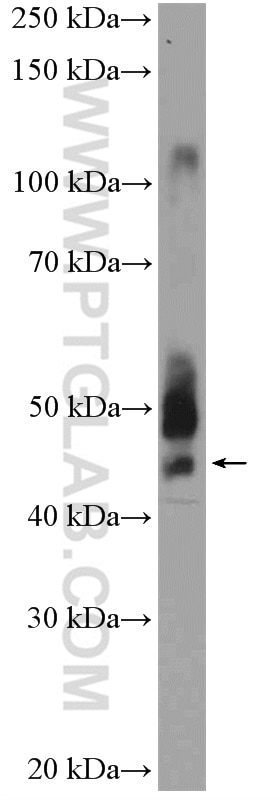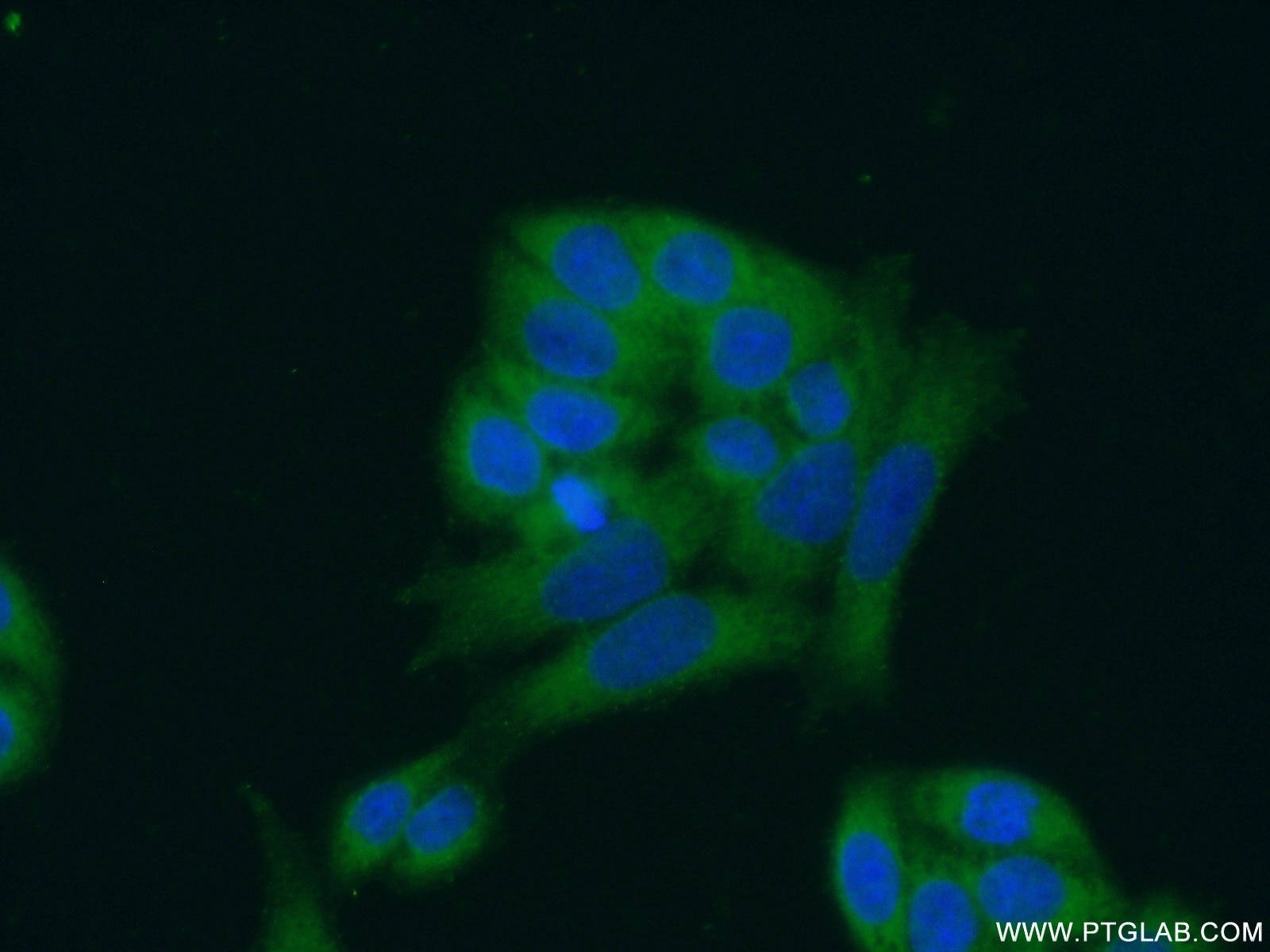ANKRD16 Polyclonal antibody
ANKRD16 Polyclonal Antibody for IF, WB,ELISA
Host / Isotype
Rabbit / IgG
Reactivity
human, mouse
Applications
WB, IF,ELISA
Conjugate
Unconjugated
Cat no : 24334-1-AP
Synonyms
Validation Data Gallery
Tested Applications
| Positive WB detected in | HeLa cells, mouse liver tissue, PC-3 cells |
| Positive IF detected in | HeLa cells |
Recommended dilution
| Application | Dilution |
|---|---|
| Western Blot (WB) | WB : 1:500-1:1000 |
| Immunofluorescence (IF) | IF : 1:50-1:500 |
| It is recommended that this reagent should be titrated in each testing system to obtain optimal results. | |
| Sample-dependent, Check data in validation data gallery. | |
Product Information
The immunogen of 24334-1-AP is ANKRD16 Fusion Protein expressed in E. coli.
| Tested Reactivity | human, mouse |
| Host / Isotype | Rabbit / IgG |
| Class | Polyclonal |
| Type | Antibody |
| Immunogen | ANKRD16 fusion protein Ag19369 |
| Full Name | ankyrin repeat domain 16 |
| Calculated Molecular Weight | 361 aa, 39 kDa |
| Observed Molecular Weight | 39-45 kDa |
| GenBank Accession Number | BC062346 |
| Gene Symbol | ANKRD16 |
| Gene ID (NCBI) | 54522 |
| RRID | AB_2879499 |
| Conjugate | Unconjugated |
| Form | Liquid |
| Purification Method | Antigen affinity purification |
| Storage Buffer | PBS with 0.02% sodium azide and 50% glycerol pH 7.3. |
| Storage Conditions | Store at -20°C. Stable for one year after shipment. Aliquoting is unnecessary for -20oC storage. 20ul sizes contain 0.1% BSA. |
Background Information
ANKRD16, a vertebrate-specific protein that contains ankyrin repeats, binds directly to the catalytic domain of AlaRS. Serine that is misactivated by AlaRS is captured by the lysine side chains of ANKRD16, which prevents the charging of serine adenylates to tRNAAla and precludes serine misincorporation in nascent peptides. The deletion of Ankrd16 in the brains of Aarssti/sti mice causes widespread protein aggregation and neuron loss (PMID: 29769718).
Protocols
| Product Specific Protocols | |
|---|---|
| WB protocol for ANKRD16 antibody 24334-1-AP | Download protocol |
| IF protocol for ANKRD16 antibody 24334-1-AP | Download protocol |
| Standard Protocols | |
|---|---|
| Click here to view our Standard Protocols |
